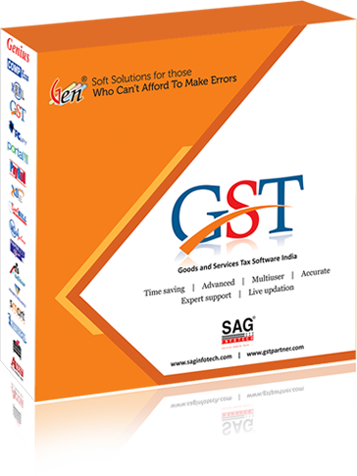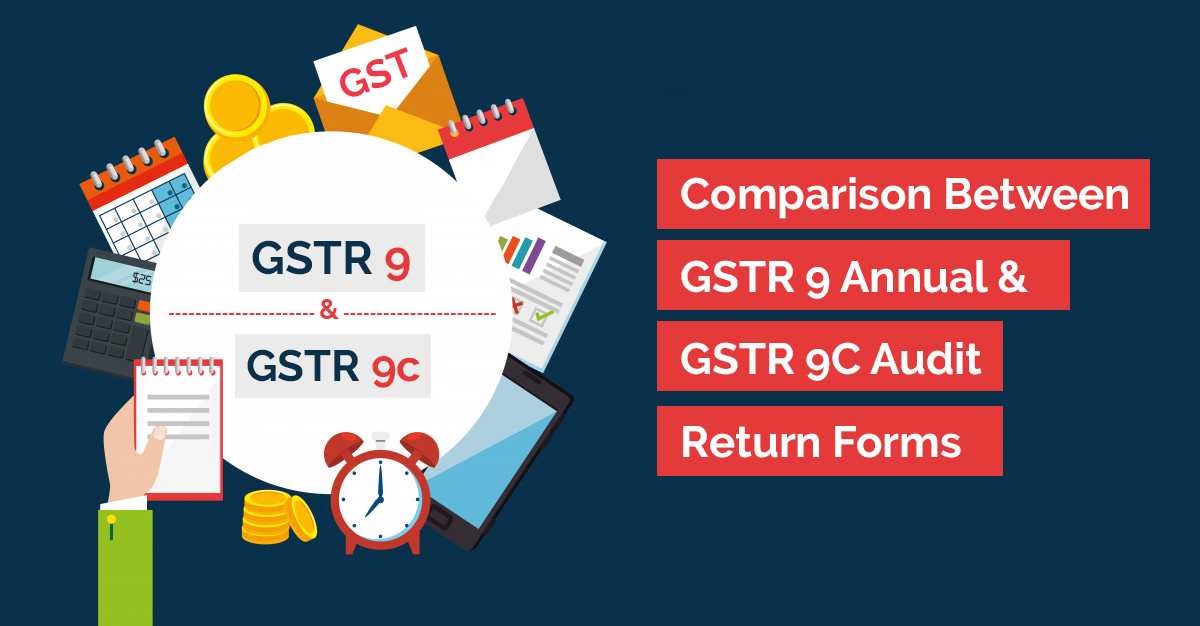GSTR-9 and GSTR-9C are two very important interlinked cogs of India’s new Indirect Tax GST. While GSTR-9 is an annual return, the GSTR-9C is a reconciliation statement signed by a designated authority (auditor or a Chartered Accountant or a CMA). One important and common feature of both the forms is that they can be filed only once. Hence It becomes increasingly important to be careful.
GSTR-9 & GSTR-9C has been marred with its own set of implementation roadblocks problems particular being the initial objection from trade and industry bodies. But post the January 1st, 2019 notification from CBIC, appeasement has been finally reached at. The new GSTR-9 and GSTR-9C forms have been notified. GSTR 9 and GSTR 9C due date has also been increased to January 31, 2020 for FY 2017-18, which was earlier scheduled to be filed before 31st December 2018.
GSTR-9C is dependent on GSTR-9 Annual Return. So annual return must be followed by auditing. Also, taxpayers must remember that as return can be filed only once and there are no provisions to revise this return.
In this blog, we make a comparative study of the GSTR 9 annual return & GSTR 9C audit forms. We hope by the end of this read, taxpayers will be eased of all prevailing confusions amidst the new notification and due-date extension.
GSTR-9 is an annual return which must be filed by all registered taxpayers. The GSTR-9C, on the other hand, is an Annual Reconciliation Statement under GST which must also be certified by a CA.
Here’s a quick look at GSTR 9 Vs GSTR 9C.
| GSTR-9 | GSTR-9C | |
| TYPE | Annual Return Form | Annual Reconciliation Statement |
| GST ACT | Prescribed by Rule 80 Under Section 44 of the CGST Act. | Prescribed by Section 35(5) under Section 44 of the CGST Act |
| Sections | GSTR-9 has Six Sections. | GSTR 9C:
Part A – Reconciliation Statement-Five Sections. Part B – Certificate-Two Sections. |
| Prescribed under a Statute | Prescribed under a Statute | |
| ELIGIBILITY | Mandatory for All Registered GST Taxpayers. | Taxpayers must file GSTR 9C if and only if aggregate turnover for a given FY exceeds Rs 2 Crores. |
| SIGNATURE | Must be Digitally Signed by particular Taxpayer. | Must be Digitally Signed by the GST Auditor (CA/CMA) |
| THRESHOLD | No Threshold | Subject to Threshold |
| ANNEXURES | Financials need not be annexed | Financials need to be annexed |
| GSTR-9 is filed before submitting GSTR-9C reconciliation statement. | GSTR-9C must follow GSTR-9 annual return | |
| DUE DATE | Must be filed on or before 31st December of subsequent FY.
For FY 2017-18, the revised due date for filing GSTR 9 is January 31, 2020. |
The GSTR-9C Reconciliation must follow GSTR-9 and hence must be filed before 31st December of subsequent FY. For FY 2017-18, the revised due date for filing GSTR 9C is January 31, 2020. |
| LATE FEES | Non Filing of GSTR-9 will attract minimum penalty of Rs 200 per day
(Rs 100 under CGST & 100 under SGST). Maximum penalty that can be levied will be 25% of the total annual turnover. |
The Section 125 of CGST Act, 2017 states penalty upto Rs 25,000 against failure to file reconciliation statement despite eligibility. |
GSTR 9 and GSTR 9C Exemptions
GSTR-9 Annual Return need not be filed by individuals belonging to any one or more of the following categories of GST registered taxpayers.
- Non-resident taxable persons
- Input service distributors
- Casual Taxable Person
- Online Information and Database Access Retrieval Service
- Individuals obtaining taxes under Section 52 of GST Act
- Entity deducting taxes (TDS) under section 51 of GST Act.
For GSTR-9C, individuals falling in any of the above listed category of registered taxpayers as well as following two categories of taxpayers:
- Taxpayers Registered under GST Composition Scheme.
- Taxpayers with annual turnover less than Rs 2 Crores.
Note: Maximum penalty for not filing GSTR-9 cannot exceed 25% of total turnover in the respective state/union territory.






